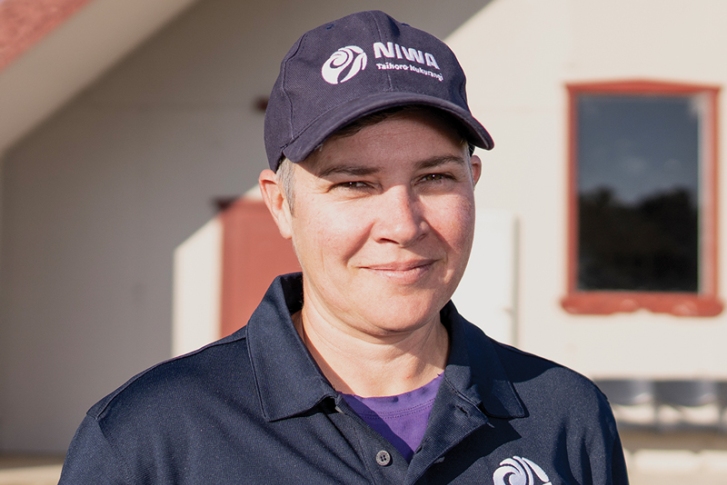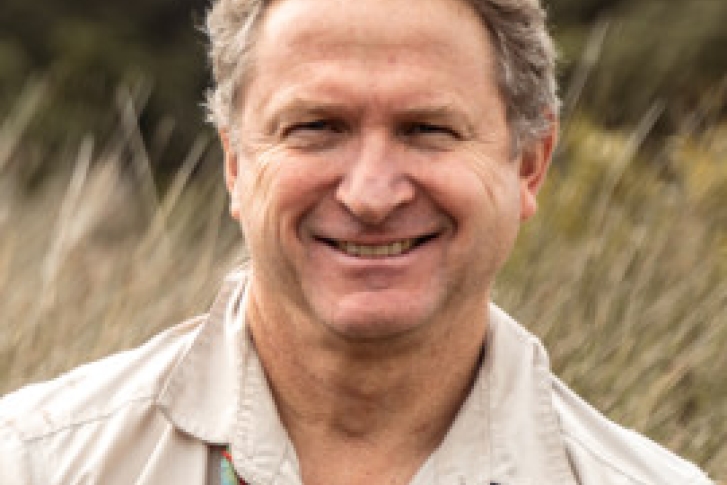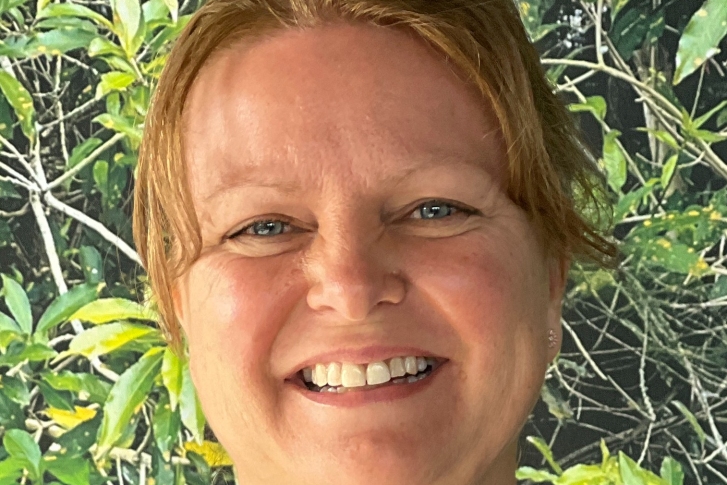Nine new research programmes have commenced, including three MBIE Endeavour Fund programmes that focus on co-management and restoration of valued freshwater species and six NIWA Strategic Science Investment Fund programmes to assist implementation of the National Policy Statement for Freshwater Management.
The three new Freshwater and Estuaries Endeavour Fund programmes and leaders are:
Justified Irrigation, led by MS Srinivasan,
Cultural Keystone Species: co-management and restoration, run through Te Kuwaha and led by Erica Williams.
Habitat bottlenecks for freshwater fauna led by Cindy Baker.
The six Strategic Science Investment Fund (SSIF) programmes and leaders are:
Managing mud – fine sediment in our waterways, led by Andrew Swales,
Riparian design for optimal outcomes – a national experiment with citizens, led by Richard Storey,
Eutrophication risk assessment, led by Sandy Elliott,
Long-term stream responses to sustainable management, led by Richard Storey,
SMARTer riparian management, led by Fleur Matheson, and
Surface water-groundwater model for national applications, led by Christian Zammit.
Justified Irrigation
Expansion of irrigation merely through increasing water abstraction is coming to an end. The future is about making better use of available water. This is a result of abstraction limits, high capital and operating costs of new supplies and the effects and costs of inefficient water application, including degraded downstream water bodies and contaminated groundwater. Our approach is to support farmer decision making by providing carefully customised information on current demand and future supplies (e.g., forecast rainfall) via an online farm-scale system.
We aspire to help farmers apply irrigation ‘justifiably’. Justified Irrigation (JI) will address the question of maintaining farm productivity, as influenced by irrigation practices, based on advanced, high resolution weather forecasts. We envisage a future where farmers actively manage irrigation, applying precisely the water needed—when, where and how much. As a consequence, farmers will increase yields, reduce costs (fertilizer, energy) while environmental flow, water quality and nutrient leaching targets are met. Motivation for uptake of JI is through both the need to reduce direct costs and to comply with increasingly stringent planning rules.
Our continued liaison with leading industry partners (Dairy NZ, Fonterra, INZ) and programmes such as the SMART Irrigation led by INZ will be key to future uptake. Our programme will use a collaborative (co-innovation) approach that brings together multiple stakeholders with diverse perspectives on water management including Māori owned farming enterprises. JI will enable farmers to optimise economic (profit) and environmental (farm footprint) outcomes and provide evidence of efficient water use to domestic and overseas markets.
NIWA contact: Dr MS Srinivasan
Cultural Keystone Species: co-management and restoration
Cultural Keystone (Taonga) Species are fundamental in the customary practices and identities of communities. Their distribution and abundance are declining, altering the socioecological systems they support. Indigenous communities must be actively involved in the management of Cultural Keystone Species to balance competing values, needs and opportunities. This approach will open cross-cultural lines of communication, increase the capacity and capability of resource managers, which in turn will optimise the recovery of Cultural Keystone Species.
This programme will use multidisciplinary approaches to consider how processes acting across multiple spatiotemporal scales jointly influence the dynamics of tuna (freshwater eels), kōura (freshwater crayfish), and kākahi (freshwater mussels) populations, focusing on critical knowledge gaps related to juvenile life stages. New, more holistic, statistical techniques will be developed with the ability to bring multiple knowledge systems together to inform Cultural Keystone Species state and temporal trend analyses and meaningful State of the Environment reporting.
The development of cross-cultural approaches that engage our communities, and recognise and empower both mātauranga Māori and science-based knowledge systems is critical for improved freshwater decision-making in New Zealand. This programme will develop frameworks that facilitate dialogue and exchange of information between knowledge systems to support the diagnosis of complex problems and the development of context-specific interventions for the effective co-management and restoration of Cultural Keystone Species.
NIWA contact: Dr Erica Williams
Habitat bottlenecks for freshwater fauna
Enabling ecologically sustainable water resource use is a key challenge for New Zealand. Land use change and human infrastructure in and around waterways can disrupt the movement of organisms between environments used by different life stages, and degrade critical habitats, preventing successful completion of life cycles. These disruptions to connectivity and habitat reduce the resilience of freshwater communities to other environmental disturbances, such as floods, pollution events or climate change. In combination, these pressures greatly contribute to declines in macroinvertebrate biodiversity and the abundance of iconic fish, such as whitebait species, which are regarded as taonga by Māori and are indicators of healthy waterways.
Understanding how species respond to human impacts is fundamental to resolving the challenge of maintaining resilient aquatic ecosystems. This project will improve the biological integrity of threatened ecosystems and species in modified landscapes. This will be achieved by identifying habitat and connectivity bottlenecks that limit dispersal and recruitment in fish and macroinvertebrate populations, and by providing guidelines on practicable solutions to overcome these constraints. The guidelines will incorporate improved understanding of the abilities of exemplar species to move between critical habitats, and how to mitigate human alterations to river habitats that impact on reproduction and colonisation success. These tools will inform effective and efficient restoration, protection and maintenance of ecosystems in modified landscapes. This help will sustain our aquatic fauna and the ecosystem services they provide to people.
NIWA contact: Dr Cindy Baker
Managing mud – fine sediment in our waterways
This research concerns the sources, characteristics, dynamics, and fate of fine sediment in NZ’s streams and estuaries. It is needed to underpin implementation of two government policies (NZ Coastal Policy Statement, National Policy Statement for Freshwater Management) which aim to preserve environmental and cultural values in waterways impacted by elevated sediment exports (and other contaminants) associated with land use.
Component studies will;
- link sediment-related environmental variables such as water clarity to physical characteristics of stream sediment load so that environmental targets can be translated to limits on sediment loads,
- use latest sediment source-tracing technologies to locate where catchment sediments originate so that load limits can be met by effective land use control,
- build and test physically-based catchment-to-sea models that will link sediment sources in catchments to impact sites in stream channels and estuaries at time-scales ranging from runoff events to centuries.
The research brings together scientists with complementary skills from NIWA, universities, and regional councils. Working with regional council partners (Auckland, Southland) will help ensure successful uptake of the scientific outputs into policy implementation. Outputs will also assist the Our Land and Water and Sustainable Seas National Science Challenges. The research will help implement Vision Mātauranga by partnering with Ngāi Tai in the sediment-impacted Wairoa catchment, using Māori history to inform and validate estuary evolution models, building Māori capacity to monitor aquatic environments, and developing a transferable framework with which to enhance kaitiakitanga across NZ.
NIWA contact: Mr Andrew Swales
Riparian design for optimal outcomes – a national experiment with citizens
Immense investments of time and money are made in NZ and overseas to rehabilitate degraded streams and their bordering riparian zones. Most restoration projects focus on fencing and planting with native riparian species, based on expectations that vegetation improves ecological health and water quality and reduces future adverse effects from surrounding land use. Evidence to support these expectations however, is scarce; most riparian restoration projects lack post-project monitoring, and fewer still include long-term monitoring scaled to the slow growth and gradual ecological effects of riparian plants. Consequently, information is lacking to identify restoration designs that will meet aspirations for healthy streams and clean water.
We will work with highly trained and supported citizen scientists to use existing riparian restoration projects from across NZ as a ‘natural experiment’ to identify design features that result in successful short-, medium- and long-term objectives (<1 to >30 years). We will determine trajectories of change in water quality, biodiversity and other attributes, from initial planting to maturation, and the time required for beneficial effects of different designs to become apparent. With citizen scientists, we will collect data from the large number of projects required to account for variations in planting designs, ages and environmental variables, such as channel width, slope, soil and climate. The results of the programme will be used to improve national and regional riparian management guidance, and link to the land-water limit-setting processes underway in NZ for ensuring community aspirations for healthy streams and clean water are met.
NIWA contact: Dr Richard Storey
Eutrophication risk assessment
Nutrients originating from land activities can cause eutrophication (excessive growth of plants and algae in freshwater and estuaries), which affects the health of aquatic biota such as insects and fish, in addition to social, economic and cultural values such as drinking water quality, recreation and food gathering. Eutrophication is a widespread problem in NZ; recent government policies seek to control the problem by applying nutrient load limits to waterways. Those limits need to be based on accurate and precise relationships between nutrient loads and eutrophication responses. However, our current knowledge of such relationships is highly uncertain.
Managing eutrophication has important economic implications, because nutrient loads are often associated with pastoral agriculture. We need to improve our ability to predict where eutrophication will occur, what forms it will take, and how much nutrient loads need to be altered to prevent eutrophication from exceeding acceptable levels. To do this, we will:
- conduct laboratory and field experiments on how nutrients and other factors such as light affect the growth of aquatic plants and algae in streams and downstream estuaries;
- build statistical models to predict where eutrophication occurs and how this is related to nutrients and other environmental factors;
- build new types of models that represent how eutrophication responses develop over time and space; and
- bring these tools together for the first time in a national-scale, structured Decision Support Framework that will assist New Zealand’s water quality management.
NIWA contact: Dr Sandy Elliott
Long-term stream responses to sustainable management
New Zealanders rate freshwater issues as New Zealand’s most important environmental issue. Stream water quality is declining in many areas of NZ where agriculture is expanding and intensifying, so reaching the Government’s goal of doubling the value of agricultural exports by 2025 while maintaining or improving overall water quality in each region (as the National Policy Statement for Freshwater Management requires) is a major challenge.
Farmers and forest owners across NZ have invested in a variety of management practices to decrease their impact on freshwaters while maintaining farm productivity. But because water quality responds slowly to changes in land management, the effectiveness of these practices can only be shown with long-term data. NIWA and partners have developed 13-45 year-long data sets in drystock, dairy and forestry catchments that show how stream flows, water quality, habitat and biota respond to changes in land use and adoption of sustainable land management.
These data sets are unique in their long time-frame and the quality of their design. They will allow us to determine the time-scales of response for different stream attributes, the interactions between attributes and how responses vary in different environments. We will also examine the proportion of farmers adopting sustainable management practices in different places, and determine the best water quality achievable with different proportions adopting sustainable management practices.
We will combine the key results into decision-support tools to help landowners and water resource managers predict long-term effects of land management decisions on freshwaters in different catchment types.
NIWA contact: Dr Richard Storey
SMARTer riparian management
There is widespread public concern in NZ about the quality of freshwaters, particularly in lowland waterways, and farming is increasingly blamed for declining trends. Riparian and wetland management is a widely accepted approach to reduce the negative effects of productive land use on waterways. Riparian fencing and planting schemes are underway throughout NZ requiring a substantial investment. However fixed and minimal width set-backs are typically used.
Our research aims to develop smarter riparian and wetland design methods to achieve better water quality outcomes while minimising implementation costs. There are substantial gains to be made if efforts can be better focused on the hotspots of runoff and contaminant transport in the landscape that are known to exist. The shade created by riparian planting might also be better designed to achieve balance between conflicting outcomes: i.e., enhanced habitat for stream biota with more shade, versus improved contaminant removal by aquatic plants with less shade.
We will field-test several new approaches to map contaminant runoff hotspots in the landscape and use field-scale trials to measure performance of various runoff trap options that could be installed in such hotspots. We will use field-scale measurements and trials, and interrogate existing datasets, to develop models to predict shade and water quality effects of different riparian planting designs.
Our research will produce practical tools and guidance to help formulate better farm and catchment riparian management plans. This will significantly advance NZ’s ability to efficiently manage these areas for more effective water quality protection and enhancement.
NIWA contact: Dr Fleur Matheson
Surface water-groundwater model for national applications
Over-allocation of water and water quality degradation are key issues in New Zealand. To address these issues, the National Policy Statement for Freshwater Management requires Regional Councils, in collaboration with iwi and communities, to set limits on water use and water quality, and establish allocations to live within these limits.
Limit-setting and allocation requires tools that can accurately predict the transport of water and contaminants, such as nutrients or sediment, from their source areas to the receiving water bodies where their effects occur. Simulation models are urgently needed, as there are too few direct measurements of surface and groundwater flows and contaminant concentrations for accurate predictions to be made. Simulation models are used to make predictions and develop scenarios of the future by combining scarce measurement data, information about processes like runoff and nutrient leaching, and detailed maps of streams, aquifers, soils and other catchment properties.
One of the challenges for modelling flows and contaminants is the complex arrangement of land and receiving waters in NZ catchments. Another challenge is posed by the time and effort needed to build models for the many places that require limit-setting.
We will overcome these challenges by developing a single, highly adaptable system - the National Hydrological Model (NHM). The NHM extends existing models and will have a modular, cost-effective design consisting of a coupled surface water-groundwater model, a water age model, a contaminant transport model and a geospatial database to store and organise detailed maps. The NHM will be constructed, tested and applied by a diverse team of CRI and council scientists.
NIWA contact: Dr Christian Zammit






